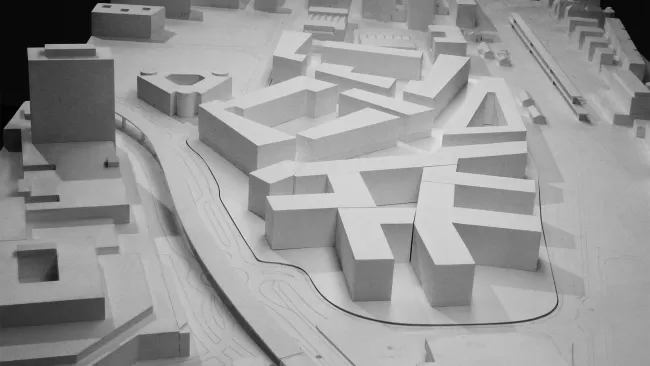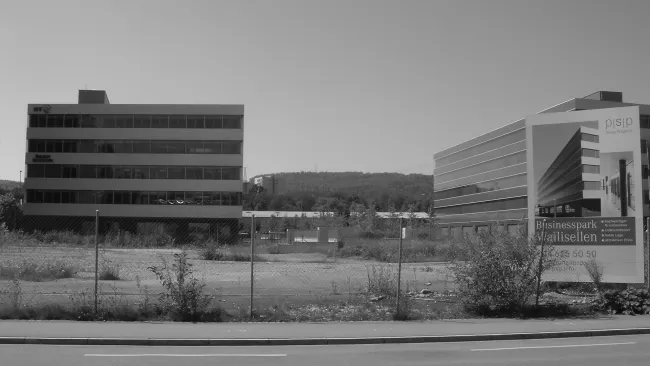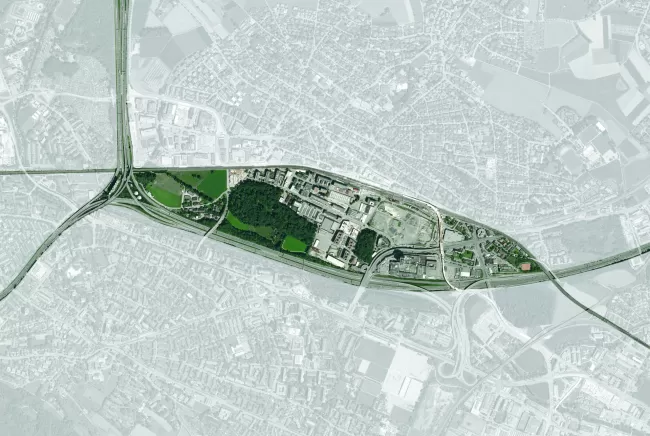Parallel Realities

A conglomerate of urban municipalities, seemingly irreconcilably colliding with one another due to a multitude of changes in infrastructure and scale, have long since grown together in the shadows of the prominent city. In doing so, this system has overcome a utilitarian relationship, insofar as it recognizes itself as its own system, tenaciously antithetic to the establishment. And whatever the city does not desire or cannot imagine is possible here; but not haphazardly, rather it becomes the program of this network of urban landscapes and results in a formula for lasting and rapid growth.
The diversity of spaces found here appear as parallel realities, worlds that seem to live next to one another without crossing paths.
Within simulated sequences of time, fragile points of contact can be experienced like confetti of different cities, villages, lives, and daily activities. With asphalt wastelands, over-proportioned billboards, new traffic viaducts, and a virtually intact village on the hill, one experiences spatial transitions like tears in a film.

One “development area” follows the next: traffic intersections, IT headquarters, Mac stores and media markets, and then another traffic circle. Adding an American-style Suburban completes the image. A casino-mall-urbanism right in the middle of Switzerland. The system itself determines what it will become.
Confrontation with changing scales is accepted as-is. The clash becomes a potential for marketing: an overarching, functional logistics zone, which succeeds because of its adaptability and flexibility. The desire for transformation and change generates an urban character here, a place which has become the largest and most dynamic area of development in Switzerland, equally enticing to multinational headquarters and used car dealerships alike. Here, one experiences the change from the world of communities and villages into that of a regional city, rapidly stretching far beyond the traditional perimeters of the settled area. Without competition for memorability, Switzerland’s largest mall stands tall. Its brownish tan color is not only witness to initial fear and current acceptance and embracement of commercial success, but also to the mental battle between urban-progressive and village-conservative views on life. This place is full of significance.


Maybe this place should not be called Wallisellen, but rather “Golden Eye,” like the swimming pool here entitled “Water World.” A large ellipse is visible on aerial photographs, uniquely laid, it is consolidated as a regional park. While the interior contours are indiscernible, the edges are densely equipped with infrastructure which is ideal for filling the space.
Almost anything can be created, anything that would fail in the proper city can be realized here.
If an event or convention in the “Golden Eye” cannot be arranged in the time given, this is a sign of its being systematically antithetical to Zurich. An enormously dynamic place, the new headquarters of a major European insurance company will have been built in the same amount of time. While the public struggles with the realization of a new football stadium, one day we will watch games in the “Golden Eye.” This magnet for abandoned ideas does not make a city but rather a place in the shadow of the existing, where everything suddenly becomes possible. One would think that this would be the perfect place to establish a new city by enhancing the programmatic vacuum with the addition of more program and density. Yet this would be a premature conclusion and the result would be simply a city next to a city next to another city. The existing character remains the superior choice, a choice which exacerbates rather than extinguishes the differences - in other words, a city of parallel realities.

Golden Eye Area